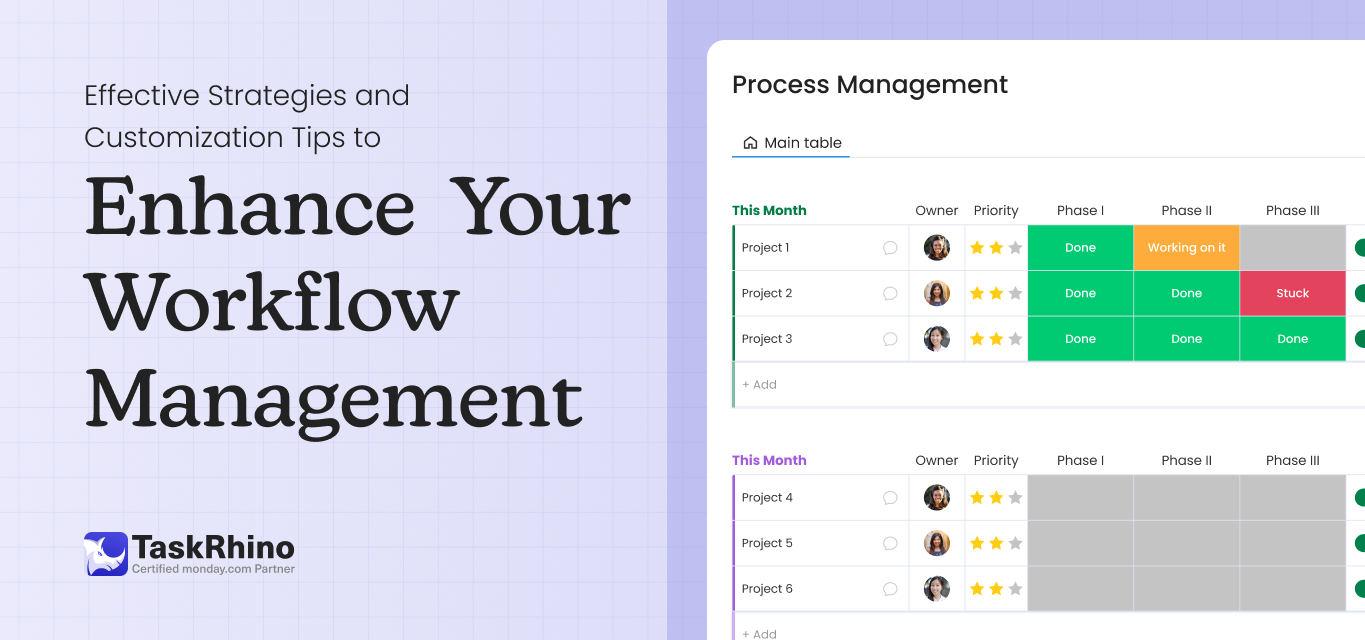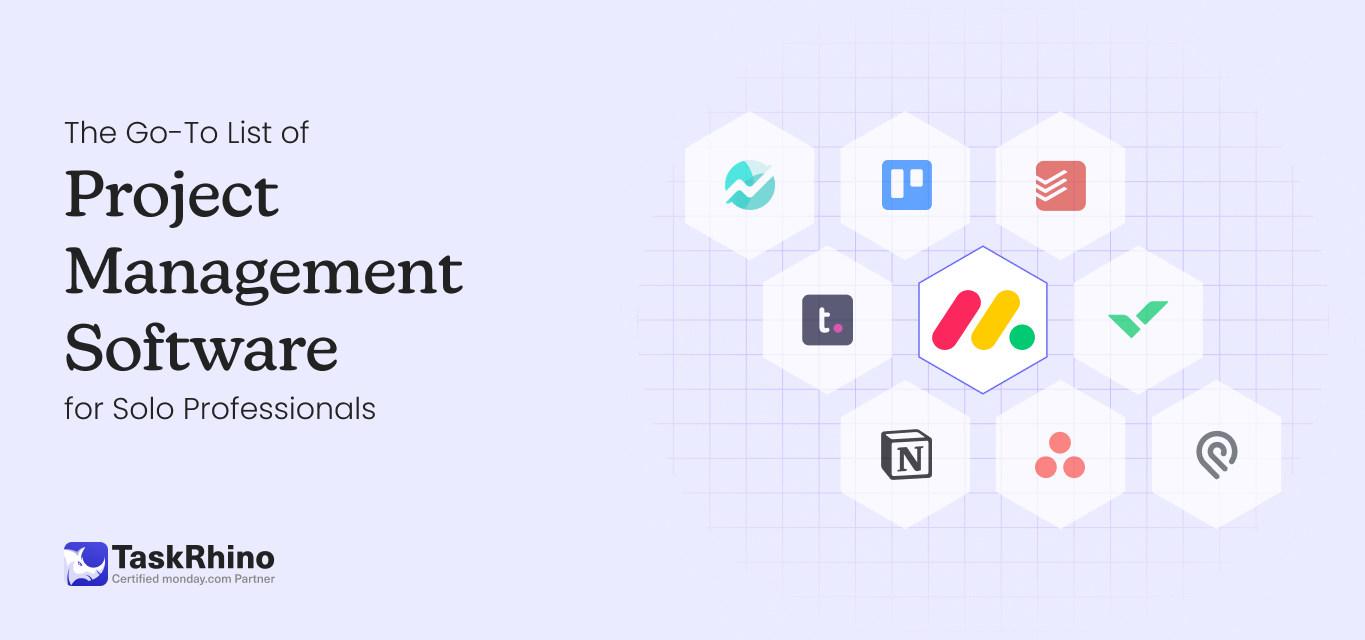
How to Enhance Your Workflow Management? Practical Strategies & Customization Tips
Do you need help managing workflows effectively at work? You are not alone. Many businesses need help with keeping their processes organized and efficient. Precise task mapping can significantly boost productivity and make everyone’s job straightforward.
This guide will teach you how to visualize and manage your workflows clearly and create easy-to-follow documentation, boosting your team’s efficiency and transparency.
Let’s improve your business processes together. You will be on your way to more effective and streamlined workflows by leveraging practical strategies and insights.
This guide provides a comprehensive and actionable approach to creating effective workflows in your organization. This will improve your workflow management productivity and ensure smoother processes.
Understand What Workflows Are
Workflows are structured sequences of actions or steps designed to accomplish a specific task. Much like following a recipe when baking a cake, workflows guide you from start to finish, ensuring each step is completed in the proper order. This ensures task completion efficiency and accuracy, as nothing is missed or overlooked.
Effective workflows help streamline processes by breaking down complex tasks into manageable steps. They can be used in various fields, from business operations to software development, ensuring tasks are consistently executed precisely and within set timelines.
Why Managing Your Workflow is Crucial?

- Streamlining tasks: Workflows organize tasks in a structured sequence, helping manage them efficiently and avoid delays.
- Improving productivity: Standardized workflows ensure everyone knows their roles and responsibilities, leading to faster and smoother operations.
- Enhancing consistency: Following a set process reduces variation, ensuring tasks are completed uniformly every time.
- Avoiding mistakes: Defined workflows minimize the risk of missing steps, reducing the chance of errors.
- Optimizing resource allocation: Clear workflows help distribute tasks effectively, using time and resources better.
Effective Workflow Management: From Mapping to Evaluation and Scaling
1. Mapping Workflows
a) Gather Information
Start by collecting all relevant details about the task. Identify key parties and required tools that will guide the workflow’s structure.
b) Document the Workflow
Utilize visualization techniques to document the workflow:
- Process Maps: Diagram the process flow.
- Flowcharts: Highlight decision points and paths.
- Checklists: Ensure each step is checked off.
c) Ensure Clarity and Accessibility
- Choose a documentation method that is easily understood by everyone involved to prevent confusion.
2. Implementing the Workflow
a) Assign Responsibilities: Clearly define roles for each step, ensuring accountability, e.g., ticket assignment in IT workflows.
b) Establish Communication Channels: Promote open communication and feedback mechanisms for continuous improvement.
c) Introduce Follow-up Steps: Ensure accountability by introducing follow-up steps for completed tasks and documenting them.
3. Evaluate Workflow Effectiveness
a) Solicit Feedback for Improvement: Regularly gather feedback from the team to identify areas needing improvement.
b) Adjust Based on Insights: Make adjustments based on feedback, allowing for flexibility and continuous improvement.
c) Maintain Documentation: Document all workflow changes to keep a transparent record of the process’s evolution.
4. Streamlining and Scaling Workflows
a) Eliminate Redundancies: Regularly assess workflows to remove unnecessary steps and improve efficiency.
b) Prepare for Scaling: Ensure standardized and scalable workflows to accommodate organizational growth.
Get More Done with Less Effort
Our experts help you maximize productivity and streamline workflows with ease.
4 Tips To Better Manage Your Workflow

Customization is critical to tailoring processes to fit your organization’s unique needs. Based on insights from Tiffany Kennedy, here’s a comprehensive guide to customizing workflows.
1. Identify Customization Opportunities
Mapping Workflows:
- Visualize your workflows using tools that best suit your team.
- Actionable Step: Color-coded flowcharts can enhance understanding for teams with visual learners.
Assessing and Assigning Priorities:
- Customize task priorities within your IT resolution workflow.
- Actionable Step: Prioritize critical tasks using categories like “High Priority,” “Medium Priority,” and “Low Priority.”
2. Integrate Customization Tips
Establish Workflow Best Practices:
- Standard Operating Procedures (SOPs): Create/refine SOPs for streamlined decision-making.
- Step: Document actions associated with different ticket types for consistent responses.
Feedback Mechanism Implementation:
- Regular feedback loops are vital for continuous improvement.
- Step: Collect team input regularly using surveys or feedback sessions.
3. Use of Keywords
Workflow Efficiency:
- Ensure every customization effort contributes to overall workflow efficiency, optimizing existing processes.
Business Process Optimization:
- Highlight how every workflow change aims to maximize productivity.
4. Specific Examples
IT Resolution Workflow:
- Categorize issues within your IT resolution workflow. For example, for “High Priority” tickets, predefined escalation procedures can ensure swift resolutions.
Feedback Mechanism:
- Implement feedback surveys post-ticket resolution to gather user experiences, refining future workflow adjustments.
Issues and Troubleshooting
Identify common workflow issues and provide thorough solutions to address them:
- Missed Steps: Ensure thorough documentation of every process step.
- Communication Breakdown: Establish clear communication channels and feedback mechanisms.
- Unclear Responsibilities: Assign and document roles clearly to enhance accountability.
Conclusion
Effective workflow management is crucial for enhancing productivity and maintaining consistency. Mapping workflows clearly from start to completion helps ensure everyone understands their responsibilities, particularly within structured IT resolution workflows. This boosts transparency and accountability.
Additionally, businesses can continuously improve their processes by visualizing workflows and integrating feedback mechanisms. Planning workflows before technology adoption is essential, as no tool can fix a broken process. Prioritizing workflow efficiency and optimized business processes allows organizations to scale operations while minimizing chaos.
However, achieving such efficiency is not a long journey. TaskRhino is here to help you streamline workflow processes and optimize organizational efficiency. With our process mapping and monday implementation services, we ensure your team has transparent, defined workflows that align with best practices.
By working closely with you, we customize workflows that improve task management and accountability. This transforms how you complete projects and deliver results.
Ready to Ease Your Workflow Management?
Explore our comprehensive guide on mapping workflows to streamline processes today! Our monday.com experts are a click away to help you with it!
Editor's Choice

How Much Does monday.com Cost? A Complete Breakdown of Plans

What is monday.com? How Can It Be Your Team’s Greatest Asset?

The Ultimate List of Project Management Software for Individual Users
